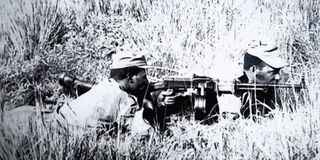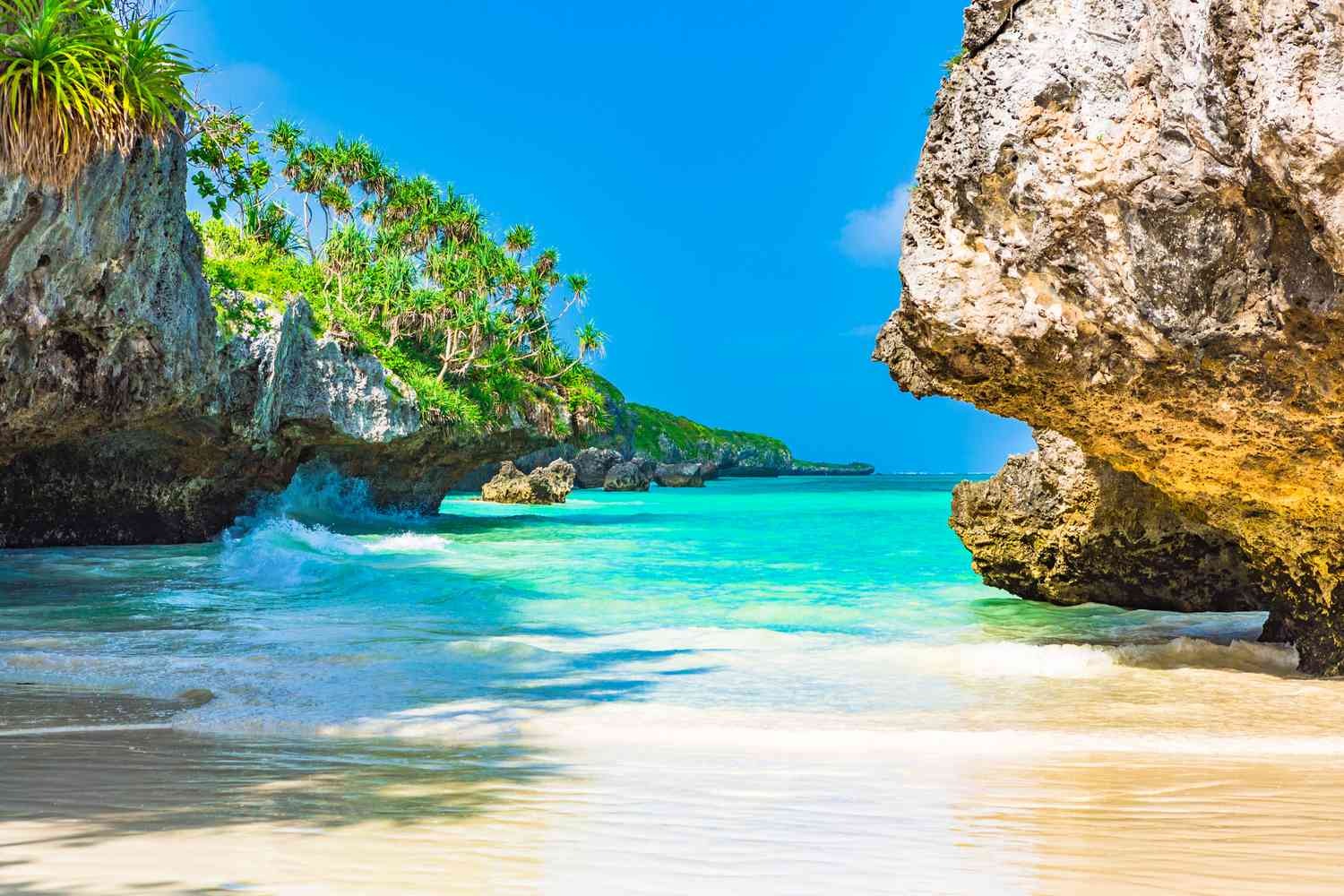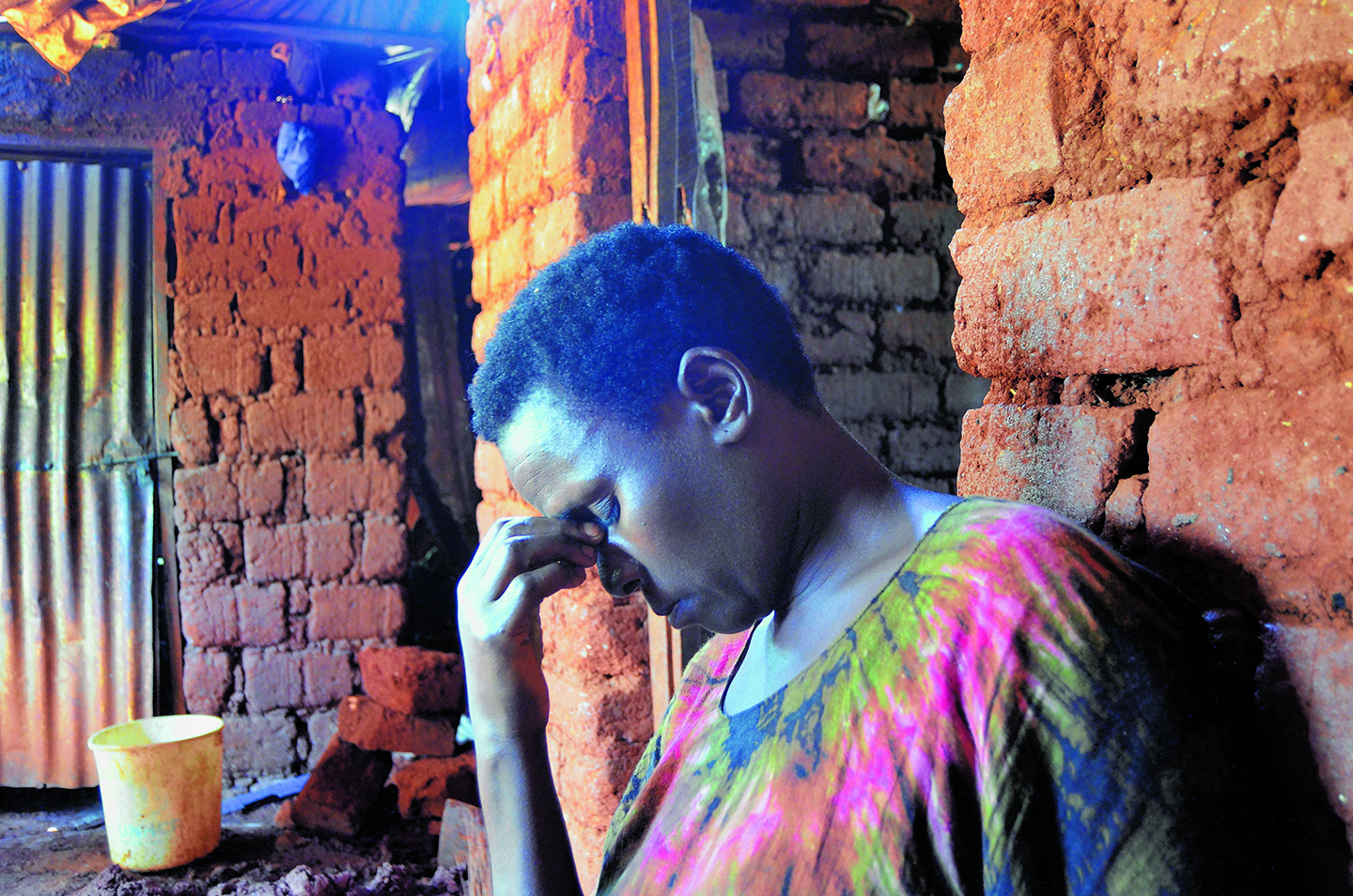SPECIAL REPORT: It’s 39 years after war that ousted Ugandan dictator

Tanzanian soldiers in action during the TanzaniaUganda war, almost four decades ago.
What you need to know:
The fall came after a five-month war between Uganda and Tanzania, in what started as a border skirmish
Kampala. It is 39 years since the Ugandan exiles from Tanzania, backed by the Tanzanian People’s Defence Forces (TPDF), captured Kampala ending the eight-year-reign of Idi Amin.
The fall came after a five-month war between Uganda and Tanzania, in what started as a boarder skirmish. The October 27, 1978 Uganda Army invasion of Tanzania saw them occupy up to 1,850 square kilometres of Tanzanian soil within two days.
In these two days, they bombed the towns of Bukoba and Kyaka in Tanzania, taking control of the whole area of the Kagera River in Tanzania. A document by the Tanzanian People’s Defence Force titled TPDF: An Operation History, alleges that Amin’s ambition was to annex some parts of northern Tanzania to Uganda. To the Tanzanians, this was a boarder skirmish not until Amin went public announcing the annexation of their territory to Uganda that they swung into action. The invasion found then Tanzanian president Mwalimu Nyerere as commander in chief visiting a military barracks in the southern part of the country.
“The president did not believe the news of the invasion not until it was confirmed through BBC that Ugandan troops had taken control of parts of Tanzanian territory,” reads the document.
Nyerere reacts
While having dinner with the soldiers the same night, Nyerere reacted to the invasion saying: “We don’t believe he had any cause to do what he has done, what remains is to go and flush him out of our country,” recalls retired Maj Gen Ben Msuya, who led the group that captured Entebbe, Kampala, including Radio Uganda and the surrounding parts of Kampala.
The reply to Amin’s action was also sent through BBC radio.
The military response from the Tanzanians was not instant, giving the Ugandan forces time to loot and plunder the area under their control.
“It took us two weeks to plan and mobilise our troops to move to Kagera. The mission was to chase Amin’s forces out of Tanzania. At no time did we have intentions of invading Uganda,” recalls Msuya. It was not just chasing Ugandan troops off the Tanzanian soil without making them feel the pinch of the pain they had inflicted on the Tanzanians.
“It was decided that we cause as much damage to the two towns of Masaka and Mbarara the same way Amin had done to the Tanzanian towns of Bukoba and Kagera,” he says.
The responsibility for the Tanzanian response fell on Brig Gen Tumainieli Kiwelu, who created a 20th division of the TPDF with different brigades like 206th Brigade under Brig Gen Silas Mayunga, 208th Brigade under Brig Gen Mwita Marwa, 207th under Brig Gen Butler Walden and 205th Brigade commanded by Brig Ramadhani Haji, thought others were created as the war progressed.
The decision for the Tanzanians to proceed to Kampala came after Amin’s declaration that bombing Kagera was phase one. He warned that phase two was coming and that he would punish the people of Masaka and Mbarara for having received the invaders.
To prepare for the full scale war Amin embarked on restocking his armory. Three officers of the Uganda army Lt Col Abdul Kisule, Yekoko and Major Aloysius Ndibowa, went to Spain to buy arms.
Amin sends team to buy arms
On the shopping list were mortars, napalm bombs and 112 fighters to be used in dropping the bombs among other military hardware. Unfortunately for the Ugandans, they were being trailed and all the orders they made were blocked without their knowledge.
On December 4, 1978, the Tanzanians launched what they called Operation Chakaza along two axes from Mutukula. The main axis was from Kyaka-Kakunyu through Masaka to Kampala, the other axis was from Mutukula westwards to take Mbarara and block any possible reinforcement from Rwanda and Zaire (Democratic Republic of Congo).
However, there was a two-weeks hold up when the Uganda army defense lines at Sanje battled the Tanzanians stalling their advance to Masaka. Sanje was one of the three fierce battles the Uganda army staged against the invading forces. The other two were at Lukaya and in Sembabule. Kisule, after his weapon buying mission, went back to the frontline.
Death trap
“The Tanzanians had laid a death trap in the eucalyptus forest after Katonga Bridge, were many of my infantry many and Libyans who had come to beef our numbers were killed, but we managed to push the Tanzanians back. Unfortunately we relaxed, had we kept the pressure, we would have captured Masaka. That was the last battle we engaged them and that’s where we lost the war from,” he says.
From there onwards, the Tanzanians marched onto Kampala with little or no resistance.
“From Mpigi, a section went to cut off Entebbe at Kajjansi. With Entebbe captured, I proceeded to Kampala first, taking Lubiri barracks. We went down to Bank of Uganda, Post Office, the Parliament, Radio Uganda, and the Nile Mansion. By 9pm, I had captured the city and I reported back to the base that Kampala was secure. The only serious resistance in the capture of Kampala was at Crested Towers and at the Internal Affairs ministry offices,” says Maj Gen (rtd) Ben Msuya.
Kampala officially fell on April 10, 1979, but because of the delayed announcement, it was declared to be the 11th of April. According to Rtd Maj Gen Msuya, Kampala was in the hands of the invading forces by 10pm on April 10.
“I literally held a gun on Oyite-Ojok’s head to read the communiqué, he had refused, saying ‘if our friends in Moshi and Dar es Salaam hear me reading this, they will think I have taken over’. I told him someone has got to say something and that person has got to be a Ugandan. That’s when people in and outside Kampala got to know what was happening.”
Kampala commissioner recalls the fall
At the time of the invasion, Maj (rtd) Wahib Muhammed was the commissioner and chairman of the security committee in Kampala District.
As a military man recommended to civilian administration he did not severe ties with his military ties. Wahib says Amin knew before the fall of his government and tried to limit both the civilian and military causalities.
A week before his downfall, Amin had assessed the situation. He directed all unit commanders to order their men evacuate their families from the barracks because it would be difficult to evacuate while under attack.
After the fall of Mpigi, shops, markets and banks had started closing. I made a public announcement directing all of them to remain open. I provided security at the fuel stations for them to remain open.
When the military decided to withdraw from Kampala, it was done with a lot of discipline.
A day before the fall of Kampala, I left my official residence in Kololo for Jinja where part of my family was already.
It was while in Jinja that we received the news of the fall of Kampala. I am sure the invading forces did not encounter any resistance entering Kampala as all our forces had already left.
It was after the announcement of the fall that all the peace and order we had kept in Kampala collapsed. Chaos and looting started after we were officially out of Kampala.
Following that announcement, we moved further east to Busia where we camped for a while monitoring events back in Kampala.
When we confirmed that the invading forces had taken command, I entered into Kenya where I spent most of my time until 1985. (NMG)


